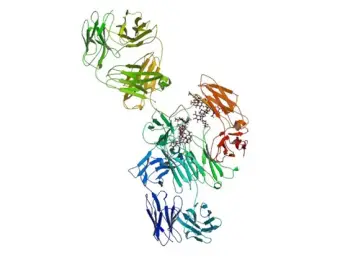Atogepant API Manufacturers & Suppliers
Find, compare & contact
Filters
Custom request?
Type
Production region
Qualifications
Country of origin
Distributor
Produced in:
Established in: 1987
MOQ: 100 g
Employees: 50+

ISO 9001:2015 & SGS audited supplier

One-stop CDMO Solutions for APl and Key intermediates

Specialized in APIs & Pharmaceutical Intermediates for 38 years
+ 0
All certificates
Producer
Produced in:
Established in: 2019
MOQ: 1 kg
Employees: 10+

Focused on pharmaceutical industry

Reasonable price for the customers

Full service from R&D stage to commercial stage
+ 0
All certificates
Producer
Produced in:
Established in: 1984
MOQ: -
Employees: 21,650

Diverse portfolio of 180+APIs

1754+ DMF across global markets

1100+ patents filed, and more than 70 own patents granted
+ 0
All certificates
How does it work?
You can register for free as long as you are registering on behalf of a legal company related to the pharmaceutical industry
Search in the search bar the product that you’re looking for. We’ll show you an overview of all available suppliers. Use the filters to select the relevant suppliers only
Have you found interesting suppliers? Then it’s time to contact them. Use the send inquiry button and send them a message. You can send for each product, 3 inquiries per week
Suppliers get notified by Pharmaoffer that they’ve received a new inquiry. They will come back to you with their questions, certificates, and offer in the chat on Pharmaoffer. We will send you an email in case of any news
Does the supplier meet your quality and commercial requirements? Then you can place the order. Just follow the steps of our order module
Looking for Atogepant API 1374248-81-3?
- Description:
- Here you will find a list of producers, manufacturers and distributors of Atogepant. You can filter on certificates such as GMP, FDA, CEP, Written Confirmation and more. Send inquiries for free and get in direct contact with the supplier of your choice.
- API | Excipient name:
- Atogepant
- Cas Number:
- 1374248-81-3
- DrugBank number:
- DB16098
- Unique Ingredient Identifier:
- 7CRV8RR151
Atogepant is a type of CGRP antagonists
CGRP antagonists, also known as Calcitonin Gene-Related Peptide antagonists, belong to a subcategory of pharmaceutical active pharmaceutical ingredients (APIs) used in the treatment of various neurological disorders, particularly migraines. CGRP is a neuropeptide that plays a crucial role in pain transmission and inflammation modulation. By inhibiting the CGRP receptors, these antagonists effectively alleviate migraine symptoms.
CGRP antagonists have gained significant attention in recent years due to their targeted approach and potential for fewer side effects compared to traditional migraine medications. They are designed to block the binding of CGRP to its receptors, thus preventing the activation of pain pathways. This mechanism helps reduce the frequency, duration, and severity of migraines.
These APIs are typically produced through chemical synthesis or biotechnological methods, ensuring their purity and potency. Several CGRP antagonists have received regulatory approval and are available in the market as prescription medications for migraine management. These drugs are administered either orally or via injections, depending on the specific formulation.
Research and development efforts in the field of CGRP antagonists continue to expand as pharmaceutical companies strive to develop novel and more effective formulations. Ongoing clinical trials aim to explore their potential in treating other conditions such as cluster headaches and post-traumatic headaches.
Overall, CGRP antagonists represent a promising class of pharmaceutical APIs that offer targeted relief for migraines and hold potential for broader applications in the field of neurology.
Atogepant (CGRP antagonists), classified under Central Nervous System Agents
Central Nervous System (CNS) Agents are a crucial category of pharmaceutical Active Pharmaceutical Ingredients (APIs) that specifically target the central nervous system. The CNS encompasses the brain and spinal cord, playing a vital role in regulating and controlling various bodily functions, including cognition, movement, emotions, and sensory perception. These agents are designed to interact with specific receptors, enzymes, or ion channels within the CNS to modulate neural activity and restore normal functioning.
CNS agents comprise a diverse range of pharmaceutical APIs, including analgesics, anesthetics, antipsychotics, sedatives, hypnotics, anti-epileptics, and antidepressants. Each subcategory addresses distinct neurological disorders and conditions. For instance, analgesics alleviate pain by targeting receptors in the brain and spinal cord, while antipsychotics are employed to manage psychosis symptoms in mental illnesses such as schizophrenia.
The development of CNS agents involves rigorous research, molecular modeling, and extensive clinical trials to ensure safety, efficacy, and specific target engagement. Pharmaceutical companies invest significant resources in identifying novel drug targets, synthesizing new compounds, and optimizing their pharmacological properties. These agents undergo rigorous regulatory evaluations and must adhere to stringent quality standards and guidelines.
Given the prevalence of CNS disorders globally, the market demand for effective CNS agents is substantial. The development of innovative CNS APIs not only improves patient outcomes but also provides valuable commercial opportunities for pharmaceutical companies. Continued advancements in CNS agent research and development hold the promise of groundbreaking therapies that can improve the quality of life for individuals affected by neurological conditions.
Atogepant manufacturers | traders | suppliers
We have 3 companies offering Atogepant produced in 0 different countries.
Get in contact with the supplier of your choice:
- Sinoway industrial Co.,Ltd from China, product country of origin China
- Apino Pharma Co., Ltd. from China, product country of origin China
- Dr. Reddy's from India, product country of origin India
Let the supplier know whether you are looking for a product with a specific monograph such as EP (Ph. Eur.), USP, JP, BP or another quality. Or, whether you are looking for hydrochloride (HCl), anhydricum, base, micronisatum or a specific purity.
You can use the filters to find high-quality suppliers. For example, you can select GMP, FDA or ISO certified suppliers. Visit our FAQ page or use the chat box in the corner to get more information about Pharmaoffer.












